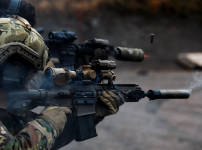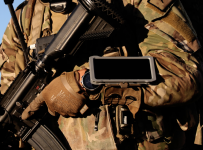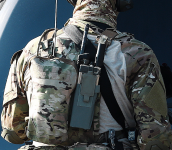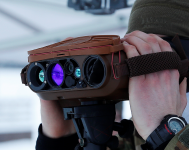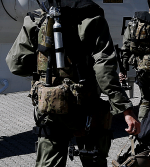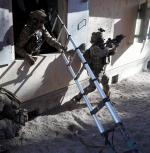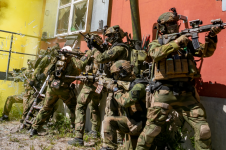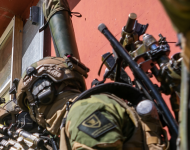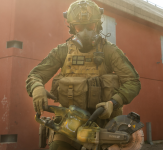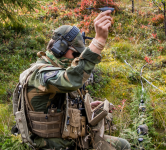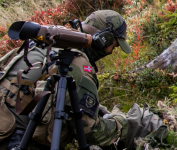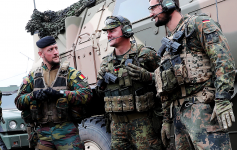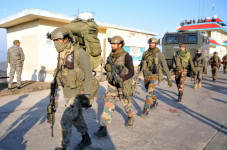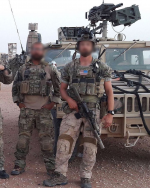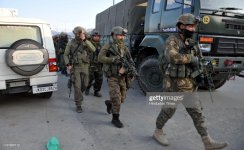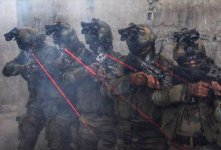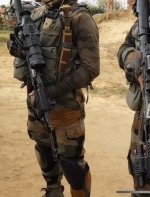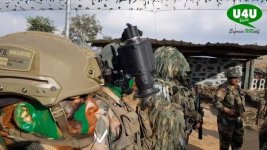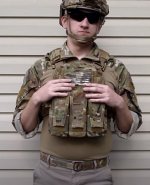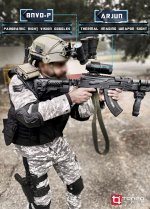It's a big problem if you consider longevity of an operator's combat-effectiveness. Not to mention its the whole point behind creation of high-cut helmets (to accommodate the headsets). If you're not going to adopt those headsets, then by going with high-cuts (like the TeamWendy EXFILs in pics above) you are literally being counter-productive - by reducing the area of ballistic protection around the ears. Might as well go with a full-cut shell to trade in some extra protection at least.
As of the Thermal sights - simply put, you cannot substitute Image-Intensifier (I2)-based night vision with Thermal Imaging. There's a reason why even JSOC units with billions in budgets prefer I2-based Night vision for 90% of use-cases, with TI only being brought in for the 10% of tasks that require searching for targets from a stationary position. I2 is the preferred solution for:
Land Navigation : You could be staring at a 50-foot drop in front of you in TI and not even know it unless the temperature variance between the edge of cliff & the bottom is significant enough. Will be stumbling over rocks, tree stumps etc. all the time.
High Speed room clearing : Because TI goggles/scopes generate images digitally, there is a noticeable blur (gamers will know this as 'ghosting') in the picture in any fast movement of the imager, especially on lower-spec models with less powerful processors. I2 is optical, so no problem there.
Driving : TI's ability to see through glass is poor. No-no for stealthy night driving (lights off) for SOFs with these.
Shooting & Aiming : When relying on I2 NVGs especially in CQC, the usual practice is not to aim down the sights, but to hold the gun slightly offset & lower from your usual sightline, and rely on the IR laser in your Laser-aiming device (like PEQ-15) to show you (through I2 NVG) where you're aiming. This is the most comfortable & fastest method in CQC. Somewhat like this:
Through helmet-mounted TI night vision, this is obviously not possible because the IR laser won't show up as well (heat vs light) and even if it does it'll be a white dot on a white target (or black on black), not very useful.
You cannot even use regular holographic/reflex sights to aim (like you can with an I2 NVG) because like I said, can't see through glass really well either. Only solution would possibly be to mount a TI on the helmet (to acquire the target) and a TI on the weapon (to shoot). It just complicates things, and you still have to deal with the other problems mentioned above.
Don't get me wrong - TI is excellent and it has its place, especially when it comes to finding concealed enemies (perhaps useful at & around LoC which is why we use it there). But it cannot replace I2 for SOF use.
What CAN replace I2 however, is this - a 'fused' sight with a TI output overlayed on top of a I2 phosphor screen :
Best of both worlds - Tonbo Imaging already has products ready with this technology in the static/tripod-mounted roles, but far as I know, is still working on getting it into mobile helmet-mounted & weapon-mounted sights. Some examples of helmet goggles with this tech already in play are the AN/PSQ-20 ENVG as well as the latest iteration of GPNVG-18:
The "5th" lens on top is the TI imager.





